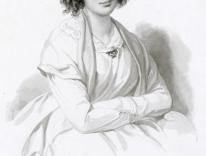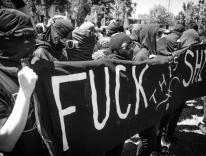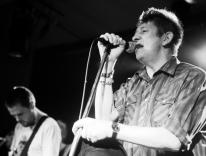Critic, journalist, and social commentator Nat Hentoff died on Saturday, January 7. He was ninety-one. Multiple generations of readers might associate him most closely with The Village Voice, where his work appeared for some fifty years. But Hentoff also wrote extensively for The New Yorker, the Washington Post, Esquire, Playboy—and Commonweal. Hentoff’s output, as described in a New York Times obituary by Robert D. McFadden,
reads almost like an anthology: works by a jazz aficionado, a mystery writer, an eyewitness to history, an educational reformer, a political agitator, a foe of censors, a social critic… [He was ] like the jazz he loved given to improvisations and permutations, a composer-performer who lived comfortably with his contradictions, although adversaries called him shallow and unscrupulous and even his admirers sometimes found him infuriating, unrealistic and stubborn.
These qualities and quirks are evident to varying degrees in his writing for Commonweal in the 1960s and ’70s, when he took up everything from the “grinding” mediocrity of mid-century pop music to the “nakedly honest moral rage” of Lenny Bruce to the “exceptional” folk artistry of a “shy, stubborn twenty-year-old from Boston, Joan Baez.” But it’s in his reflections on jazz, race, and rights—and where they intersect—that Hentoff’s voice can be most clearly heard.
From “Jazz and Jim Crow” (March 24, 1961):
Today the “serious” (which does not necessarily mean solemn or pretentious) Negro jazz musician is more and more being accepted on his own terms—if he has the stamina and self-confidence to scuffle for several years rather than change those terms. Simultaneously, through the courts, the sit-ins, and the irreversible pressures of practical economics and politics, the Negro non-jazzman is also closer to the point of not having to make—and hence to waste—his long-smoldering point in Jim Crow. As governmental and judicial forces further accelerate non-token integration throughout the country, the strength of the racist “Muslim” followers of Mr. Muhammad will inevitably fade, as will the force and frequency of jazz-as-retribution.
In fact, some—not all—of jazz is already much too skittish about protest in any form. As the music, “soul” and otherwise, becomes a bigger business, its softer warriors want most to “make it,” and safety comes first. A few weeks ago, Ella Fitzgerald turned to her recording director at a session and said worriedly, “There’s a mention of Cuba in the verse to this. Should we leave it in?” Or, as [playwright] Lorraine Hansberry, James Baldwin, [actor/director/activist] Julian Mayfield and others have been putting it, “We ought to examine just what we’re being integrated into.”
From “Black Backlash” (July 3, 1964):
The white press has been focusing on the “white backlash”—the presidential primary votes received by Governor George Wallace in Wisconsin, Indiana, and Maryland; the sanctification of the “neighborhood school” in Northern white communities; the resistance to fair housing laws in California; and many other illustrations that whites outside the South are also far from “ready” for integration. Arthur Spingam, who will surely be the last white president of the NAACP, points to the backlash and blames “extremist” Negro demonstrations. “Friends” of the Negro, such as the New York Times, also lecture the Negro militants and warn that they are losing white allies by their “irresponsible” tactics. (“Responsible to whom?” one of these militants asks with tart logic.) Despite this alarm at the backlash among white liberals and moderates, the phenomenon itself is no surprise to most Negroes—from the apathetic to the most revolutionary…. What the “white backlash” is creating in Negro communities, however, is an intensification of the crisis in Negro leadership. The extent of white resistance to such integration as requires more than pietistic affirmations of the American Creed gives added impact to the new wave of Negro militants who claim that the established leadership—with its focus on civil rights—is irrelevant to what must be done.
From “The Deepening Chill” (February 25, 1972):
[I]n this fourth year of the Nixon Administration, an increasing number of print and broadcast journalists are decidedly and volubly apprehensive about the state of the First Amendment….
Being licensed and thereby all the more open to damage from hostile government, many television stations—as Fred Powledge discloses in The Engineering of Restraint [a report from the American Civil Liberties Union]—are well into self-censorship. A man responsible for deciding what goes on a local station’s six o’clock news told Powledge: “It’s a matter of deciding that a project you want to undertake, and that you would have undertaken before, just might not be worth the trouble to undertake now. It’s the worst form of censorship, I think. It literally chills me when I think about it and see it, and I have been seeing it.” … As for the present deepening chill between government and the press, it’s likely that so far, apprehension is more widespread than stiffening resistance. But to be afraid, you do have to be awake. And in that sense, the Nixon Administration has been of great use to the press. It has jolted us all into an awareness that faith in the First Amendment is not nearly enough to make it work.
Please email comments to [email protected] and join the conversation on our Facebook page.
Previous Story
A Theologian Watches 'The Young Pope'
Next Story
Amemus eterna


